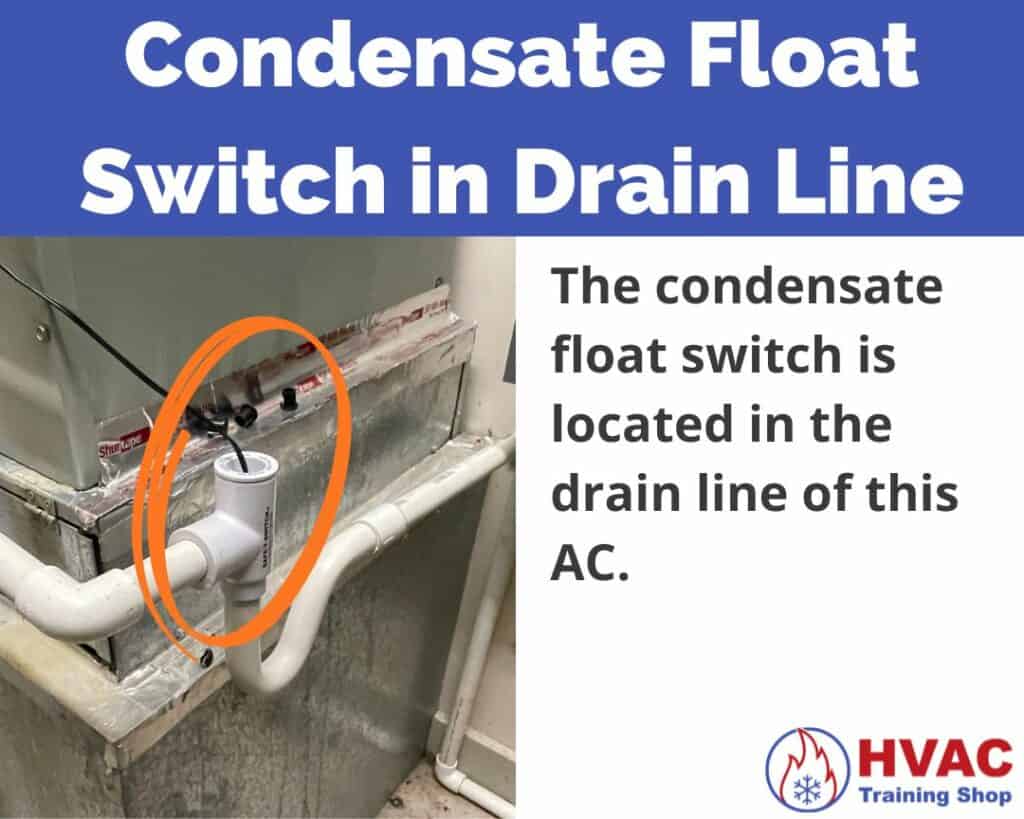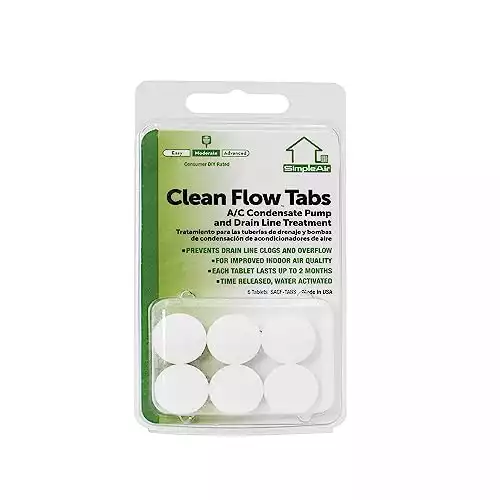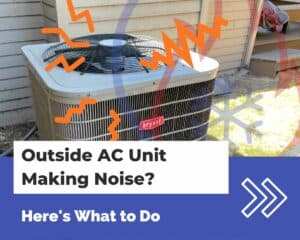HVAC Training Shop is reader-supported. As an Amazon Associate, I earn from qualifying purchases.
Is your AC producing an abnormal amount of condensation? Or is the condensation escaping your AC and getting all over the floors in your home?
Excessive condensation coming from an AC is not necessarily a bad thing. In fact, in some climates, an AC will produce a constant stream of water when cooling your home.
But how do you know if your AC is producing too much condensation? In some cases, an AC may produce too much condensation when it’s not working properly.
Worse yet, the condensation from an AC may leak out of the unit and get all over the floor in your home.
In this article, I’ll go over why ACs produce condensate and what you should do when your AC produces excess condensate. I’ll also let you know what you should do when your AC is leaking condensate all over your home.
Why do ACs produce condensate?
ACs produce condensate as a byproduct of the cooling process. As the air in your AC cools down, its water-holding capacity reduces.
Water then condenses out of the air, and drips down from your AC’s cooling coil into your condensate drain pan or drain line.
One critical concept to understand is that cool air holds less moisture than warm air. This means that as your AC cools air to a lower and lower temperature, more water will condense out of the air.
This is why your AC generally produces more condensation on a sweltering hot day versus a mild warm day.
An AC that produces excess condensation when its hot and humid is a completely normal thing.
But what should you do if your AC is producing an excessive amount of condensate—even on a mild day? Or if the condensation is escaping your AC and getting on the floor of your home?
Below I’ll go over what you should do if your AC is having condensation problems.
Change the air filter
One of the simplest and most effective things that you can do to reduce excessive condensation from your AC is to change its air filter.
How does changing the air filter reduce the amount of condensation that your AC produces?
It’s all due to airflow.
When your AC’s air filter is dirty, less air flows through your AC. This causes the temperature of the air in your AC to decrease since it has more time to cool down.
As the temperature of the air in your AC lowers, condensation is produced. And if the air in your AC gets down to a lower temperature than normal, even more condensation is produced.
In the worst cases, an excessively dirty air filter (or anything that inhibits airflow through your AC) can cause your AC coil to freeze.
A frozen AC evaporator coil will also cause excessive condensation from your AC. I’ll talk about that next.
Defrost the evaporator coil
If your AC’s evaporator coil is frozen, your AC will produce lots of water.
Why does that happen?
As the frozen evaporator coil thaws out, water will drip down into your AC and (hopefully) out of its drain pan and/or drain pipe.
So why does an evaporator coil freeze up in the first place?
An AC’s evaporator coil freezes up due to airflow or refrigerant issues. The most common reasons are airflow issues—such as a dirty air filter, air vent blockages, or blower motor issues.
Refrigerant issues can also can an AC’s evaporator coil to freeze. Look out for things such as a refrigerant leak or a blockage somewhere in the refrigerant system.
So how do you defrost an AC evaporator coil?
Defrosting an AC’s evaporator coil is a pretty simple process. All you need to do is change your AC from “cool” mode to “fan-only” mode.
When you turn your AC to “fan-only” mode, your AC’s fan turns on and blows the warm air from your home onto the AC coil, defrosting it in the process.
Unfortunately, defrosting an AC coil can take quite some time—usually a few hours.
Whatever you do, don’t try to chip the ice off of your AC coil. You could inadvertently damage the coil.
While you’re waiting for the coil to thaw out, take a look around for things that may have caused the coil to freeze in the first place—such as a dirty air filter or blocked air vents.
If the airflow through your AC system looks good, then it might be time to get an HVAC professional to check out your unit to ensure that there are no problems with its refrigerant system.
Clear the condensate drain line
If you have condensation leaking from your AC, the first thing that you should do is clean its drain line.
Condensation is a normal byproduct of the air conditioning process. Condensation only becomes a problem if your AC’s drain system can’t handle the amount of condensation that your AC is producing.
That’s why keeping the condensate drain line clear is essential—you need an open drain line to efficiently remove condensate during those humid summer days.
For more information about clearing out an AC condensate drain line, see my article below:
Check the condensate float switch
The condensate float switch is a part that turns off your AC when its drain gets clogged.
The float switch is usually found in the drain pan or drain line. You’ll know that you found the float switch because it has a small wire that goes from the float switch to the AC.

The condensate float switch is a normally closed switch. This means that the switch is in the “ON” position under normal running conditions.
When the drain pan or drain line fills up with water, the mechanism inside of the float switch floats up and switches to the “OFF” position. When this happens, the AC turns off to prevent an overflow of water in your home.
If the condensate float switch is broken or disconnected, then your AC has no mechanism to turn itself off when the condensate pan or drain fills up. This can cause an overflow of condensation from your AC.
To test your condensate float switch, open it up and find the float. The float is usually a small plastic piece that moves up and down.
If you move the float upward, then your AC should shut down. If it shuts down, then the float switch is working fine. Keep in mind that it may take a minute or two for your AC to shut down, depending on the model.
Clean the condensate collection pan
Some AC units have a condensate collection pan underneath the unit. The purpose of the condensate collection pan is to collect any condensation that overflows out of the AC unit.
The collection pan keeps the condensation off of the floor so it doesn’t cause any water damage to your home.
Sometimes a condensate collection pan has a drain line attached to it. The connection between the drain pan and drain line can sometimes get clogged up with gunk that prevents water from draining from the pan.
If the line gets clogged up, the pan may fill up and shut down your AC unit. Or worse, the drain pan may overflow and dump water all over the floor.
Cleaning the drain pan is a simple task—my method is to fill it up with water, then suck all of the goop out using a wet/dry vacuum.
Once your drain pan is clean, you’ll want to make sure it stays clean—that’s where drain pan tablets come in.
Put a tablet in your drain pan every month to prevent slime growth in your drain pan—that way it’s much less likely that your pan gets clogged up again.
Pop one of these Clean Flow tablets into your drain pan every month to keep slime growth away. Comes with 6 tablets so you'll be good for 6 months.
Check the condensate pump
If your AC is located in a low spot such as a basement, it might have a condensate pump installed to move the condensation up and out of your home.
The condensate pump is a device used to move water from a low elevation to a higher one.
The condensate pump works by using a float switch to detect the water level in your AC’s drain pan. Once the water reaches a high enough level, the float switch activates the pump. The pump then moves the condensate out of the drain pan to another location—such as a drain or somewhere outside of your home.
If the condensate pump stops working, then your AC may end up with a pool of excess condensate in its drain pan—or worse—on the floor.
If your condensate pump is not working, the first thing that you should do is check to make sure that it’s getting power.
If the power connections to the pump look good, then the next thing to check is the switch for the float. The switch for the float can sometimes get stuck open and not turn the pump on.
Find the switch that the float connects to, and give it a light tap with a screwdriver handle. The tap will sometimes unstick the switch, allowing your pump to resume operation.
You also need to ensure that your pump is clean and free of debris.
First, turn off and unplug the power going to your pump.
Next, open up the pump basin and clean out all of the debris and slime inside of the basin. Also, make sure that the float is clean and able to move freely.
For more information about how to troubleshoot a condensate pump, check out this video from Know How Now below:





Just a question. Can the Freon being low cause excessive condensation?
Hi Ted,
Low freon can indirectly cause excessive condenation due to a frozen evaporator coil. When the ice melts off of a frozen evaporator coil, water will flow out of the condensate line, causing the appearance of excessive condensate flow.
Hope this helps,
-Trey
I am still looking for the answer why the condensate water not going to the dripping pan but straight down to the blower and bottom of the furnace on a downward air handler? The coil is not freezing and the pan never gets full. The pan is just not catching the water.
Hi Saul,
Is there a leak or crack in your pan somewhere? Thats the most probable scenario.
Otherwise, you’ll need to look at the condensate dripping off of your evaporator coil and see where its going and why its not flowing into the pan.
Hope this helps,
-Trey
Water dripping down from a slant or A-coil could be a sign of a refrigerant leak. If some of the circuits of your coil are dry (no refrigerant) those will be warm. The wet circuits are cold and condense water, while the dry circuits are not producing condensate. The lack of condensate on the dry circuit disrupts the flow of water from the wet circuit and that results in dripping. Look for leaks at the coil. The other possibility is dirt in the fins of your coil which could also disrupt the flow of water down to your pan. So thoroughly clean your coil. Also want to check you have sufficient air flow over the coil so there isn’t any freezing which can cause excess condensate.
Hello Trey,
for an area where it has high humidity weather during summer such as Houston, Can the AC produce very excessive water if I left all windows wide open including the front door?
Hi Sam
Your AC will produce excessive condensation if you leave your windows and front door open in a humid area. However, your AC should be able to drain all of the condensation, as long as its drain system isn’t clogged up.
-Trey